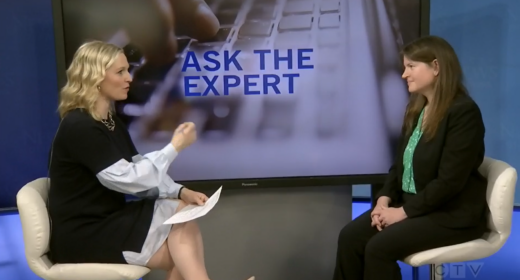Invariably, a successful lawsuit consists of a right, a wrong and money to bridge the two. It's the lack of money that results in meritorious suits being rejected. For a plaintiff 's lawyer, a defendant without means is like a pen without ink. Neither is sufficient to sign the cheque at the end of the day. Furthermore, common sense suggests that the greater the wrong, the deeper the pocket required. Fortunately, in a society where the automobile is as ubiquitous as air, the Ontario Court of Appeal has had little difficulty, and even less reservation, about tapping into the auto policy as a means of bridging the gap between a plaintiff's right and a defendant's wrong.
The primary tool in the court's arsenal is s. 239(1)(a) of the Insurance Act, which provides for indemnity where the loss or damage arises "directly or indirectly" from the use or operation of an automobile. Applying a moderate level of judicial activism and broad principles of statutory interpretation, the court has seized on the word "indirectly" as a means of triggering coverage. Effectively, the court has eviscerated the burden of proving a causal connection between the use or operation of an automobile and the injuries suffered by a plaintiff. Rather, recent cases suggest that it is sufficient, for the purposes of triggering coverage, if the defendant merely used an automobile to travel to the site where the wrong is eventually committed.
Consider the recent decision in Herbison v. Lumbermens Mutual Casualty Co. [2005] O.J. No. 2262 (Ont. C.A.). In that case, the plaintiff, Harold Herbison, was shot in the leg by his hunting partner, Fred Wolfe, who had mistaken him for a white tailed deer. At trial, Justice Denis Power concluded that Wolfe had been negligent and awarded Herbison $832,272.85 plus interest and costs. Not surprisingly, a judgment of that magnitude requires a large funding source. Lumbermens, as Wolfe's automobile insurer, had become the obvious choice for both litigants.
To that end, Wolfe commenced a coverage application against Lumbermens arguing that the plaintiff's injuries arose indirectly from his use of his truck in the moments before the shooting. The matter came on for hearing before Justice Power in the year before the main litigation. In dismissing Wolfe's application, Justice Power noted that while "the legislation and the policy must be broadly interpreted" the "elastic band stretches only so far. Here, the band has clearly snapped." He concluded that "when the shooting took place, the vehicle was not in use by Mr. Wolfe". No appeal was taken.
Undeterred by this earlier decision, Herbison started a recovery claim against Lumbermens under the same general provisions of the Insurance Act. In his decision, Justice Bernard Manton concluded that "the accident resulted from the negligent handling of a hunting rifle – something totally unrelated" to the use of the truck for transportation. In the result, he dismissed the claim and Herbison appealed.
On appeal, Justice Borins set aside the trial decision and ordered Lumbermens to indemnify Herbison for the amount of his judgment. According to Justice Borins, "causation is not an element of section 239(1)". Rather, if it can be shown that the damages arose "indirectly, or can be more or less remotely connected to or grow out of the vehicle's use or operation" coverage will be triggered. In justifying the result, Justice Borins concluded that "the causation analysis takes place in the context of a legislative intention to provide broad motor vehicle liability coverage for damages related to the use or operation of a vehicle." In short, if a vehicle can in any manner be linked to the accident, coverage will be triggered.
This conclusion was reinforced in a separate decision of the court, released on the same day as Herbison. In Vytlingam (Litigation guardian of) v. Farmer [2005] O.J. No. 2266, the plaintiff was injured after his vehicle was struck by boulders thrown off an overpass in North Carolina by the defendants, Todd Farmer and Anthony Raynor. Neither Farmer nor Raynor were in a vehicle at the time of the event but both had used Farmer's car to drive themselves and the boulders to the scene. Vytlingam commenced an action against Farmer, whose liability limits were equal to the US$25,000 minimum required by the State of North Carolina, and his own insurance company, Citadel General Assurance, pursuant to the OPCF 44 endorsement. Citadel brought a motion for summary judgment on the grounds that Farmer was not a motorist at the time of the accident and Vytlingam's injuries did not result from the use or operation of an automobile. The motion was dismissed and Citadel appealed. In her decision, Justice Jean MacFarland concluded that Farmer was a motorist within the meaning of the endorsement and further that there was a sufficient connection between the use or operation of Farmer's vehicle and Vytlingam's injuries that recourse could be made to the automobile policy.
While it is arguable that the vehicle in Herbison did, in some token manner, contribute to the plaintiff's injuries (the lights from Wolfe's truck had partially illuminated the area where the shot was fired), there is simply no evidence to suggest that Farmer used his vehicle for anything other than transportation to the scene of his crime.
If that is the only connection required to conclude causation, it is difficult to fathom any situation in which an automobile policy couldn't be accessed. As pointed out by Justice Russell Juriansz in his dissenting opinion, "We live in a car culture. People use cars to get to the places where they cause or suffer damage … More is required than the fact that the participants and objects involved in the event have been conveyed to the site of the event in a car."
While it may be patently unfair that victorious plaintiffs should be left with hollow judgments, it has become equally unreasonable that the automobile insurer should always be made the "go to" when money is required to satisfy a claim. Surely a clearer line should be drawn!
[This article is reprinted with permission and first appeared in the August 2005 issue of The Lawyers Weekly. Author: Joseph Griffiths]


